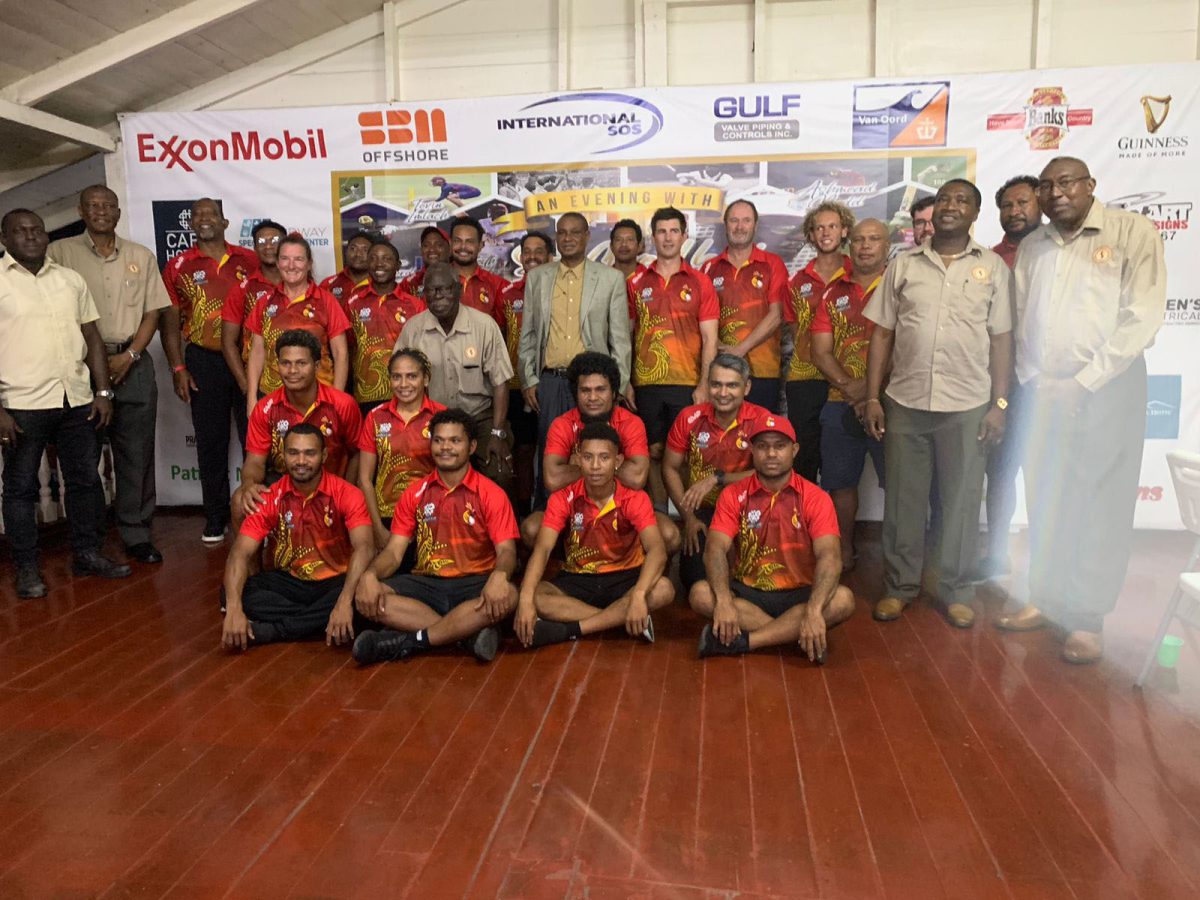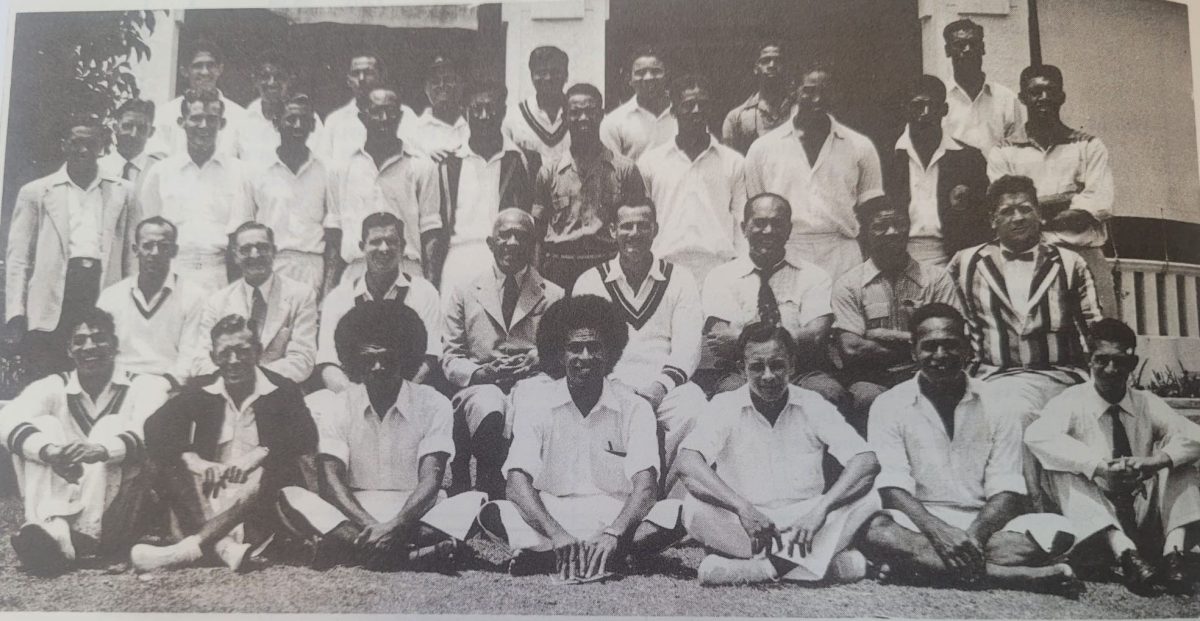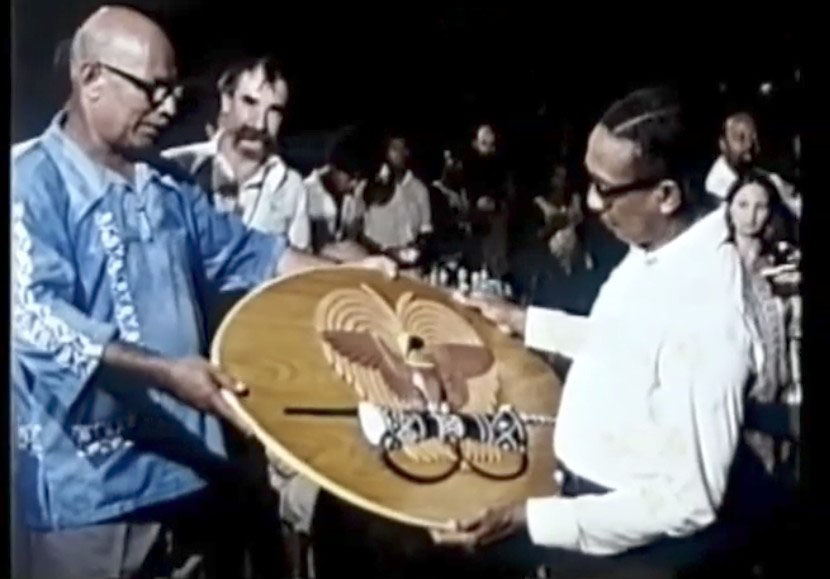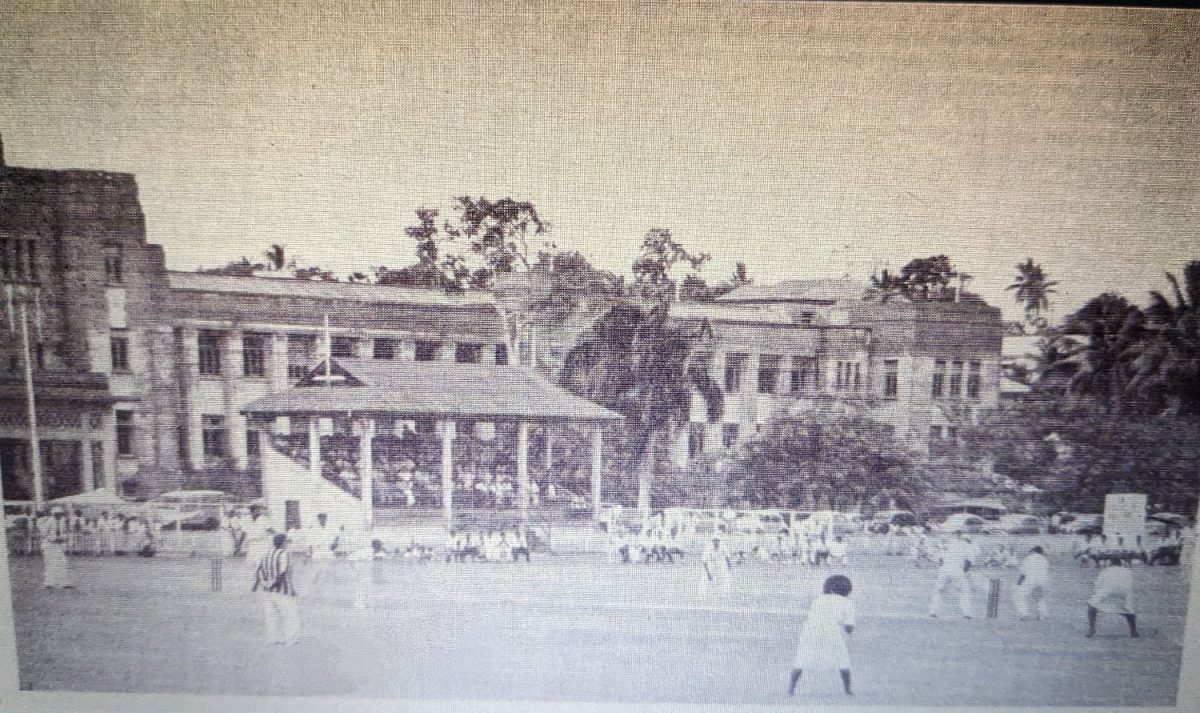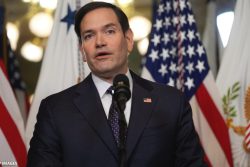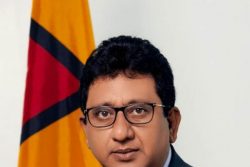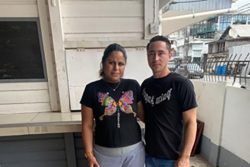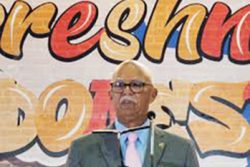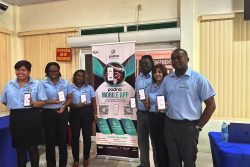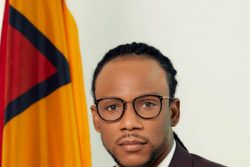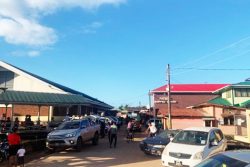In this week’s edition of In Search of West Indies Cricket Roger Seymour recounts two visits by the West Indies cricket team to the South Pacific.
Prologue
One of the enduring legacies in former British colonies and current British Overseas Territories (BOTs), with varying degrees of self government, is the game of cricket. In far-flung archipelagos with miniscule populations the game is contested amidst heated rivalries which have developed between clubs, villages and towns. Today, many former colonies and BOTs are listed among the 96 Associate Members of the International Cricket Council (ICC) including, Belize (Associate Member since 2017), Bermuda (BOT, 1966) – (In Search of West Indies Cricket, ‘Bermuda’s Annual Cup Match, 27th August, 2023), Cayman Islands (BOT, 2002), Cook Islands (2017), Falkland Islands (BOT, 2017), Fiji (1965), Gibraltar (1969), Hong Kong (1969), Kenya (1981), Malaysia (1967), Maldives (2017), Papua New Guinea (1973), Saint Helena (BOT, 2017), Samoa (2017), Seychelles (2017), Singapore (1974), Turks and Caicos Islands (2017), and Vanuatu (2009).
Remote outposts in the South Pacific
The words South Pacific conjure two images: the world’s largest ocean and the long running Broadway musical by Rodgers and Hammerstein, based on James Michener’s Pulitzer Prize fiction winner “Tales of the South Pacific”. When the subject of discussion is sport, rugby is the discipline readily associated with that part of the world. However, the game of cricket is just as important.
In the 1981 Wisden Cricketers’ Almanack, in an article titled “Cricket in the Pacific”, English cricket writer Scyld Berry observed that the two epicentres of cricket in the Pacific lie in Fiji and Papua New Guinea. In exploring why the game was more popular with Polynesians and Melanesians rather than the former colonies in East and West Africa, Berry concluded, “The reason why appears to lie with those missionaries.”
The cricket scribe stated, “ They came from the London Missionary Society, and apart from a few castaways and beachcombers they were the first white men to settle in the South Pacific: courageous men, too, for the cooking pots took a toll of them. According to their reports, they found cannibalism and inter-tribal warfare to be endemic. Frequent, indiscriminate massacring of entire villages made refinements like birth control superfluous. How were these missionaries to stop the natives butchering each other? By teaching them cricket, they decided; it was as simple as that. To quote chapter and verse of the missionaries’ strategy: ‘We transformed their spears into wickets, their shields into bats.’ This was written by Charles Abel, the Missionary Society’s leading evangelizer in Papua New Guinea.”
Fiji, January, 1956
The West Indies’ initial foray into this part of the cricketing world occurred purely by chance whilst on the way to their first exclusive tour of New Zealand from January to March 1956. The West Indies had previously played two Test matches against the Kiwis following the 1951/52 series in Australia, winning the encounter 1 – 0. Here’s an extract from an article titled “More cricket in the Fiji Islands” which was published in the 1956 Spring Annual edition of The Cricketer and penned by H King, the Honorary Secretary of the Fiji Cricket Association.
“The West Indies Visit
“Air transport has militated against Fiji cricket inasmuch as in the old days when Test teams sailed to their destinations, the greater time allowed the arranging of a day’s cricket. It was a return to more spacious times when it was learned in December [1955] that the West Indies cricket team were on the high seas bound for New Zealand and that they would call at Suva for a day. A cable was promptly sent to J D Goddard [West Indies Manager] offering a net’s practice for them on Albert Park or better still, would they play an exhibition match in which all West Indians would appear, with Suva supplying the remainder? The reply came back in the affirmative. This caused considerable interest among cricket followers and we prayed for a fine day. On 12 January, the Southern Cross arrived early in the morning and the sun shone in all its glory. It was discovered that some of the team had caught bad colds, and that both Goddard, the manager, and Denis Atkinson, the captain, and Bruce Pairaudeau (vice-captain) would prefer to play a ‘West Indies XI’ against a ‘Fiji XI’ as it would be an opportunity to get their own team from many distant islands, together for the first time.
“Ratu E T T Cakobau, the FCA President dashed off to find four more players to make up the Fiji side, while the hon secretary escorted Everton Weekes, Sonny Ramadhin, and other cold-sufferers around Suva in search of ‘shark oil’ which is regarded as a sure remedy against the common cold in the Caribbean. Before the match started at 10.30 am, John Goddard went out with the captains, Atkinson and Ratu K K T Mara (an Oxford Authentic) and umpires to inspect the wicket. The ground looked perfect, and many old-timers thought the wicket was as good as any they had seen in Suva for years. Goddard, however, fingered the wicket and, laughed heartily, told his skipper that they wouldn’t make much more than 50 on this pitch as it was similar to the one they played on during their last Indian tour [1948/49 Tour of India, Pakistan and Ceylon, Goddard was the captain] when they lost their only match against East Zone.
“The wicket was of matting tightly pegged over closely-cropped grass. Fiji’s batting opened with the Apted brothers, against the bowling of [Wilfred ‘Sonny’] Edun and Atkinson. Both Apteds had given Fiji several good opening partnerships in the last tour of New Zealand [1953] (particularly W W Apted), but the hero on this occasion turned out to be H J, the left-hander, who not only played a polished innings of 33, but later fielded brilliantly to cause a collapse in the West Indies’ innings. Against the varied attack of Atkinson, Edun, Smith, Ramadhin and Valentine, the local men scored 91 on the stroke of midday, when the last wicket fell. Ilikena Bula [who made 1,000 runs in 17 matches on the 1948 tour of New Zealand] made 27 in one of his typical forceful knocks, including a 6 off Smith. The only other double figure scorer was P T Raddock, Fiji’s skipper, in the last New Zealand tour, who made 11. Smith 4 for 16, Sobers 2 for 9, Atkinson 3 for 14, Valentine 1 for 15, Ramadhin 0 for 11, and Edun 0 for 8, bowled during the match.
“Both teams, officials and invited guests, adjourned to the Grand Pacific Hotel for a buffet luncheon, drinks and speeches, at which the hon secretary welcomed the visitors and also expressed his faith in the potential strength and future of Fiji cricket, which, after all, had something in common with that of the West Indies in that the game was played by different peoples in several islands; that each colony had a multi-racial community with an important affinity in that all played and loved cricket, and one day, if Fiji could combine their special racial talents, as the West Indies so successfully, we might also reach Test match standards. Ratu Sir Lala Sukuna expressed his sincere admiration for West Indies cricket and their great sportsmen, past and present. He had been asked by His Excellency the Governor to express his sorrow that stern duty elsewhere in the colony had made it impossible for him to be present. Sir Ronald Garvey had himself served in the Caribbean and knew many West Indian cricketers personally.
“After luncheon Furlonge and Binns opened the batting against the bowling of Mara and Driu and put on 28 without loss. Gosling relieved Mara and Ilikena Bula soon held a slip catch to dismiss Binns. After adding 6 to the score, Garfield Sobers slashed a shortish ball and was brilliantly caught in the covers by Swann and Gosling was now right on form. The Fijian, Asaeli Driu, then uprooted Furlonge’s off-stump for 16. Gosling bowled accurately, turning the ball quickly away from the batsman, and in this way he got Depeiza snapped up by Raddock behind the wicket after having snicked a 4 through slips. Two brilliant catches by Harry Apted off the same bowler disposed of both Smith and Atkinson for a single and 4 respectively.
“Having read about the record stand of 374 [the partnership was 347] for the 7th wicket by Atkinson and Depeiza against Lindwall, Miller, Archer and Johnson, it was difficult to believe this collapse. Goddard, Ramadhin and Valentine were all clean bowled for nought and King stood in front of a straight one from Gosling after hitting a desperate 4. The West Indies were dismissed for 63, leaving spectators at first stunned, then jubilant. The small, furthest outpost of the Empire were home by 28 runs.
“The batting of H. Apted and Bula and the bowling of Driu and Gosling, backed up by superb fielding worthy of the best company, were the highlights of Fiji’s greatest victory. Asaeli Driu (4 for 26) and J W Gosling (6 for 25) were excellent by any standards and as the Goslings originally came from Yorkshire, the deficiencies of [Lieutenant William] Bligh [of HMS Bounty fame]and [Captain James] Cook [who were among the first Englishmen to sight Fiji] were being made up.
“The West Indians were generous in their praise, and it was heartening to hear the calypsos and songs of these Caribbean and Pacific Islands in joyful and friendly abandon.The docks were crowded when the Southern Cross pulled out to the nostalgic strains of the farewell song, ‘Isa Lei’.”
Papua New Guinea, October, 1975
Papua New Guinea (PNG) achieved its independence on 16th September, 1975, from Australia which had administered it as a single territory from 1945. It comprised the former British protectorate of Papua – which had been an Australian territory since 1906 – and the former German colony of New Guinea, which had become Australia’s responsibility as a Mandated Territory of the League of Nations (1921 – 42) and a United Nations Trust Territory following World War II.
Officiating at the main ceremony held in Port Moresby were His Royal Highness Prince Charles, Prince of Wales (representing Queen Elizabeth II, the British monarch); Sir John Kerr, Governor-General of Australia; Australian Prime Minister, Gough Whitlam; and Chief Minister of Papua New Guinea, Michael Somare, who became the country’s first Prime Minister.
The next major event occurred on Monday, 20th October, 1975 when a Trans Australia Airlines (TAA) flight arrived at Port Moresby Airport from Sydney, Australia. On board were the winners of the inaugural World Cup Tournament, the 1975 Prudential Cup, the West Indies, special invitees of the PNG Government to participate in two commemorative matches as part of the independence celebrations. The honoured guests were understandably bleary eyed having endured a 30-hour flight itinerary from Trinidad followed by another four-hour trip to PNG.
The 12 players, accompanied by Manager Esmond Kentish were; Clive Lloyd (Captain), Deryck Murray, Lance Gibbs, Roy Fredericks, Alvin Kallicharran, Lawrence Rowe, Bernard Julien, Andy Roberts, Vanburn Holder, Keith Boyce, Viv Richards, and Gordon Greenidge.
The hosts, then the newest Associate Member of the ICC, thought so highly of the matches that a week prior they hired then Australian national coach, Brian Taber, a former Test wicket-keeper (1966 – 70), and renowned former Australian captain Richie Benaud to coach the PNG team. The light-hearted affairs were played on concrete pitches covered with matting, and were broadcast live on radio in both English and pidgin.
Match summaries:
Papua New Guinea Combined XI vs West Indies at Lae, 22 October (25 overs). Combined XI, 107 for three; N Agonia, 36*. West Indies, 177 for eight; I V A Richards, 45, A I Kallicharran, 38, S Nalum, 3 for 36. West Indies won and batted on.
Papua New Guinea vs West Indies at Port Moresby, 23 October. PNG, 115 for eight off 35 overs; C Harrison, 34, L Ad, 30*. West Indies, 201 for eight, off 31 overs; C H Lloyd, 88, B D Julien, 35, R C Fredericks, 35. West Indies won by four wickets and batted on.
The visit to Papua New Guinea was quickly forgotten following the 1 – 5 loss in the Test series Down Under. However, the West Indies visit was considered an important boost for the game in the newly independent nation. PNG finished fourth in the final qualifying tournament for the 2015 ICC World Cup, held in New Zealand in 2014. Although they failed to qualify for the tournament, their final position allowed PNG to attain One Day International (ODI) status, which also gave the team Twenty20 International (T20I) status.
On 8 November, 2014, PNG played its first ODI in Australia, beating Hong Kong (202 off 48.3 overs) by four wickets. Scores: Hong Kong, 202 off 48.3 overs, PNG, 203 for six, off 40 overs.
This year marks Papua New Guinea’s second venture in the T20 World Cup, having previously qualified for the seventh tournament staged in Oman and UAE in 2021.
Notes
Fiji
West Indies team to New Zealand 1956: Denis Atkinson (Captain), John Goddard (Player/Manager), Alfie Binns, Clairmonte Depeiaza, Tom Dewdney, Wilfred Edun, Hammond Furlonge, Frank King, Bruce Pairaudeau, Sonny Ramadhin, Alphonso Roberts, Collie Smith, Garfield Sobers, Alf Valentine, Everton Weekes.
The 1957 Wisden Cricketers’ Almanack report of the “West Indies in New Zealand, 1956” has no record of the game in Fiji.
Ilikena Bula’s full name was Ilikena Lasarusa Bulamainavaleniveivakabulaimainavavaoalakebalau.
Wilfred “Sonny” Edun, who was most likely the source for the photographs for the media guide “From Wellington to Georgetown Tour 72”, recalled that some of the Fiji cricketers played bare feet and wore knee length skirts (akin to Scottish kilts), which are called Sulus, and are considered the country’s national dress.
Papua New Guinea
Members of the Papua New Guinea T20 World Cup squad often heard stories of the famous visit by the World Cup Champions West Indies in 1975. On Monday 3rd June, the PNG team was hosted by the Demerara Cricket Club (DCC), the home of three senior members of the 1975 team, Captain Clive Lloyd, Lance Gibbs and Roy Fredericks.
The other members of the tour party, Inshan Ali, Len Baichan, Michael Holding, David Murray and Albert Padmore, joined the team in Adelaide, after the visit to Papua New Guinea.
The 1976 West Indies Cricket Annual has a very detailed record of the 1975/76 Australia/West Indies Test series, in fact, it has the most comprehensive reports of any Test series published in the annual during its existence (1970 – 1991), yet there is not a single reference of the visit to PNG.
